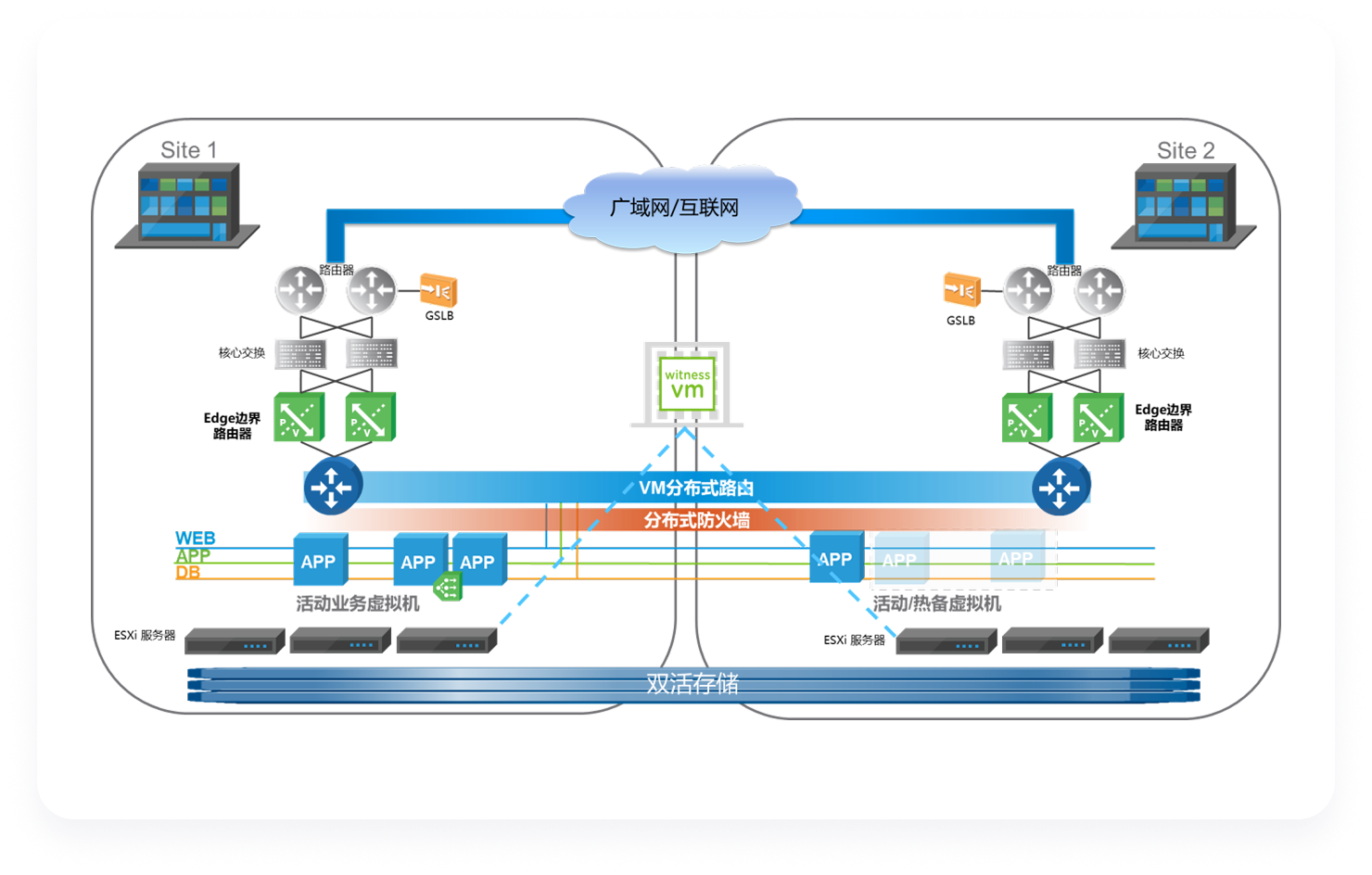Customer Benefits

Case Background
In an active-active solution, both data center sites operate simultaneously, handling production workloads simultaneously. This significantly improves overall service capabilities and resource utilization. Currently, there are two types of active-active data center configurations: AA active-active and AP active-active.
Active-active APs categorize services. Some services are primarily deployed in Data Center A, with Data Center B serving as a backup. Other services are primarily deployed in Data Center B, with Data Center A serving as a backup. If one site fails, the other site must fail over. Only one service can be running in either data center at any given time. AA active-active is true active-active. The same site can simultaneously handle all external access services, achieving true business load balancing and seamless fault switching, thus improving the overall external service capabilities of the data center.
Active-active APs categorize services. Some services are primarily deployed in Data Center A, with Data Center B serving as a backup. Other services are primarily deployed in Data Center B, with Data Center A serving as a backup. If one site fails, the other site must fail over. Only one service can be running in either data center at any given time. AA active-active is true active-active. The same site can simultaneously handle all external access services, achieving true business load balancing and seamless fault switching, thus improving the overall external service capabilities of the data center.
Demand Analysis
Solution Introduction
The two centers each have storage resources, and a third-party witness site runs a witness host. All hosts are taken over by a management platform and run in the same virtualization cluster, so the high availability function of virtualization can be used without the need for an application cluster. All virtual machines can be started in other centers after a single center fails, and the switching time is 2 to 10 minutes. If you want to speed up the disaster switching time, applications need to be deployed in a cluster, that is, each application deploys multiple virtual machines, running in two data centers and providing services at the same time. For upper-layer applications to be able to communicate in both data centers at the same time, it is necessary to implement the "big second layer" and "distributed gateway" in the two locations through network technology to ensure that no matter which data center the virtual machine runs in, the same IP can be accessed anywhere.

Solution Advantages

Storage virtualization
All site storage is virtualized into one

Network virtualization
The application IP shows the same

Resource Sharing
Load balancing, distribution on demand at different sites

Cross-disaster recovery
Cross-deployment of primary and secondary applications, allowing any site to be both primary and secondary






